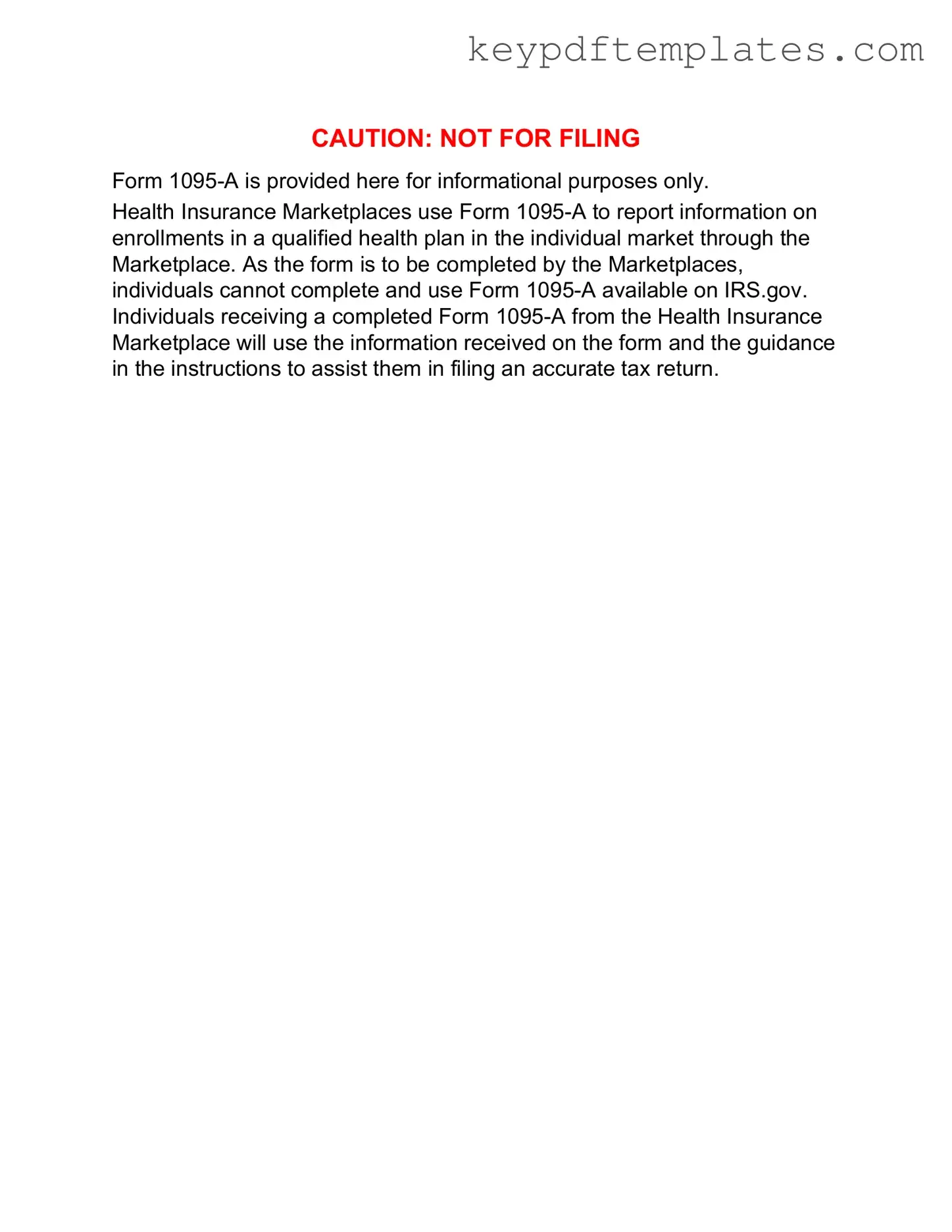Get IRS 1095-A Form
The IRS 1095-A form is a document that provides important information about health insurance coverage obtained through the Health Insurance Marketplace. This form is essential for taxpayers who need to report their health insurance status when filing their federal income tax returns. Understanding the details of the 1095-A can help individuals ensure compliance with tax laws and accurately calculate any premium tax credits they may qualify for.
Modify Document Online
